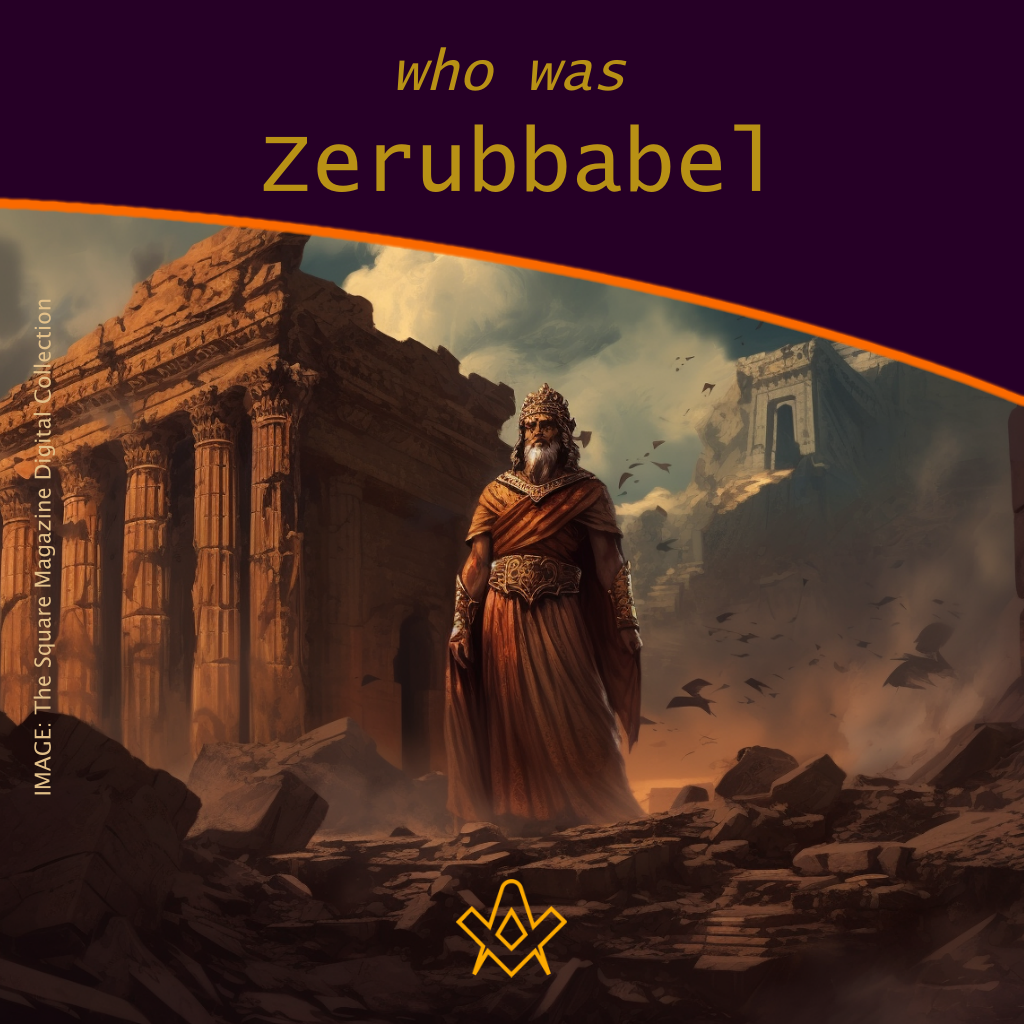Zerubbabel, a figure whose name echoes through the annals of Jewish history, played a crucial role in the restoration of Jerusalem and the rebuilding of the Second Temple in the post-exilic period.
As a descendant of King David, Zerubbabel was a symbol of hope and continuity for the Jewish people, who had been exiled from their homeland and longed for a return to normalcy.
This essay delves into the life and significance of Zerubbabel, exploring his role in the historical context and the enduring impact of his leadership on the development of Judaism.
Background: Babylonian Exile and the Return
To understand the significance of Zerubbabel, we must first examine the historical context in which he emerged. In 586 BCE, Jerusalem fell to the Babylonian Empire, led by King Nebuchadnezzar II.
The Babylonians destroyed the First Temple, constructed by King Solomon, and took the majority of the Jewish population into exile in Babylon.
This event, known as the Babylonian Exile, marked a turning point in Jewish history, as it stripped the people of their land, Temple, and monarchy.
However, in 539 BCE, the Persian Empire, under Cyrus the Great, defeated the Babylonians and assumed control of the region.
Cyrus issued a decree allowing the Jewish exiles to return to Jerusalem and rebuild the Temple, an act of benevolence that earned him the epithet “Messiah” (or “anointed one”) in the Jewish tradition.
This marked the beginning of the post-exilic period, during which Zerubbabel would rise to prominence.
Zerubbabel: The Davidic Scion and Political Leader
Zerubbabel was a descendant of the royal line of David, and his lineage positioned him as a potential heir to the throne of a re-established Judean monarchy.
The Bible identifies him as the son of Shealtiel, a member of the Davidic line, and the grandson of King Jehoiachin, who had been exiled to Babylon.
While there is some debate among scholars regarding Zerubbabel’s precise genealogy, his status as a scion of the Davidic line is indisputable.
Zerubbabel’s leadership role was established when he was appointed as the governor (or “peḥah”) of the Persian province of Yehud, which included Jerusalem and the surrounding territory.
As the appointed governor, Zerubbabel played a vital role in overseeing the return of Jewish exiles to Jerusalem and the reconstruction efforts that would follow.
His role as both a political leader and a descendant of King David positioned him as a symbol of continuity and hope for the Jewish people, who longed for a restoration of their homeland and religious institutions.
Rebuilding the Temple: Zerubbabel and the Second Temple
One of Zerubbabel’s most significant achievements was overseeing the reconstruction of the Temple in Jerusalem, which had been destroyed during the Babylonian conquest.
The rebuilding of the Temple was a monumental task, both logistically and symbolically. It required significant resources, labor, and political cooperation, but it also represented the restoration of the spiritual heart of Judaism.
The rebuilding efforts began in 537 BCE when Zerubbabel, along with the high priest Jeshua, led the first wave of Jewish exiles back to Jerusalem.
The biblical account in the books of Ezra and Haggai highlights the challenges that the returning exiles faced, including opposition from neighbouring peoples and internal strife.
Nonetheless, Zerubbabel persisted in his mission and eventually succeeded in completing the construction of the Second Temple in 516 BCE, a process that took approximately two decades.
The dedication of the Second Temple marked a significant milestone in the restoration of the Jewish nation and provided a focal point for the reestablishment of the Jewish community in Jerusalem.
Prophetic Expectations and Messianic Hopes
The post-exilic period was marked by a heightened sense of messianic expectation within the Jewish community.
The Babylonian Exile had profoundly disrupted the political, social, and religious order, and many Jews looked to the prophecies of the Hebrew Bible for guidance and hope.
Zerubbabel’s Davidic lineage and his role in the rebuilding of the Temple made him a natural candidate for messianic speculation.
The prophets Haggai and Zechariah, both of whom were active during Zerubbabel’s tenure as governor, explicitly connected Zerubbabel to the fulfilment of divine promises.
Haggai described Zerubbabel as “my servant” and “the signet ring” of God (Haggai 2:23), while Zechariah envisioned Zerubbabel as the one who would lay the foundation and complete the construction of the Temple (Zechariah 4:9-10).
These prophecies served to elevate Zerubbabel’s status and suggested that he might be the long-awaited messianic figure who would restore the Davidic monarchy and usher in a new era of peace and prosperity.
Despite these prophetic expectations, Zerubbabel did not ultimately re-establish the Davidic monarchy or fulfil the traditional messianic role.
The reasons for this are not entirely clear, but it is possible that political constraints imposed by the Persian Empire limited Zerubbabel’s ability to claim the title of king.
Additionally, it is worth noting that the messianic concept was still evolving during this period, and the expectations surrounding the role and identity of the Messiah were not yet fully formed.
Legacy and Impact on Jewish History
Although Zerubbabel did not ultimately fulfil the role of the Messiah in the traditional sense, his leadership during the post-exilic period had a lasting impact on Jewish history.
As a descendant of King David, he served as a symbol of continuity and hope for the Jewish people, who had been uprooted from their homeland and faced an uncertain future.
His role in the rebuilding of the Temple and the reestablishment of the Jewish community in Jerusalem was instrumental in preserving the Jewish religion and culture.
Furthermore, the messianic expectations surrounding Zerubbabel played a significant role in shaping the development of Jewish messianic thought.
His connection to the Davidic line and his role in the rebuilding of the Temple provided a template for later messianic figures, who would also be expected to restore the monarchy and renew the religious institutions of Israel.
Conclusion
Zerubbabel’s story is a testament to the resilience and determination of the Jewish people during a tumultuous period in their history.
As a leader, he played a pivotal role in the rebuilding of the Second Temple and the reestablishment of the Jewish community in Jerusalem, providing hope and inspiration for future generations.
Although he did not ultimately fulfil the traditional messianic role, his impact on Jewish history and the development of messianic thought is undeniable.
As such, Zerubbabel remains an enduring figure in the annals of Jewish history, a symbol of restoration, and a harbinger of hope in the face of adversity.
Article by: Maarten Moss

Maarten Moss writes regularly as a guest author
Recent Articles: masonic history
 Protestantism and Masonic Influence in Brazil Discover the untold story of how Freemasons helped Southern Americans immigrate to Brazil post-Civil War, fostering economic and educational growth in Santa Bárbara d’Oeste and Americana. Learn about their pivotal role in establishing Protestant churches and ensuring the secularity of the Brazilian State amidst a Catholic-dominated society. |
 Explore the proper use of the sacred word in Brazilian Freemasonry through an analysis of Masonic literature and Bible translations. Uncover the errors in pronunciation and the need for corrections to maintain liturgical coherence in rituals. Discover insights on Masonry, rituals, and the Hebrew word Boaz. |
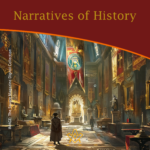 Narratives of History |
 A Very Royal Sesquicentenary |
 Unveiling the Enigma: Discover the Royal Society's Legacy and its Impact on Science. Delve into the fascinating history of the Royal Society, the prestigious UK academy shaping scientific progress since 1660. Explore its pivotal role in advancing knowledge, fostering collaboration, and unlocking the secrets of the universe. Prepare to be amazed! |
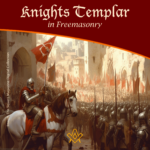 Knights Templar in Freemasonry Uncover the Mysteries of the Knights Templar in Freemasonry! Delve into the intriguing world where chivalry and symbolism intertwine. Discover the captivating rituals and ancient secrets behind the Knights Templar Masonic Orders. Explore the historical connection and delve into the enigmatic narratives that continue to fascinate enthusiasts today. Unveil the hidden truths now! |
 The Royal Arch stands as the rainbow of promise in the Ritual; it stands as the promise of the resurrection; of that which was lost and that it shall be recovered. The question arises as to whether the Master's Word was originally communicated in the Third Degree? On this point there is some diversity of opinion. Originally published in 1915, this insight into the Fourth Degree – the Holy Royal Arch – is as relevant today as it was over 100 years ago. |
 Unveiling the Mysteries of Druidism: Discover the Intriguing Connection with Freemasonry. Explore the ancient spiritual practice of Druidism and its fascinating ties to the enigmatic world of Freemasonry. Delve into the shared symbolism and rituals that have captivated minds for centuries. Unlock the secrets of these intertwined traditions today! |
 Uncover the legacy of freestone masons and their pivotal role in crafting medieval cathedrals. Discover the artistry behind their techniques, the hierarchy within their craft, and the enduring impact of their intricate carvings. A deep dive into the world of these master craftsmen awaits you! |
 Unearth the intriguing journey from Vincha Culture to Freemasonry. Discover how ancient building methods intertwine with modern Masonic philosophies. This exploration will shed light on the fascinating link between the Serbian term "shestarenye" and the symbolic significance of the compass in Freemasonry. |
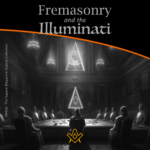 Freemasonry and the Illuminati Unravel the enigmatic world of Freemasonry and the Illuminati in our latest exposé. Dive into centuries-old mysteries, debunk conspiracy theories, and discover the truth behind these elusive societies. Are they puppet masters or mere myths? Join us as we dissect history and fact from fiction. |
 The Île des Templiers, or “Island of the Templars” lies within a leafy park in Paris. The execution site of Jacques du Molay, the last Grand Master of the Knights’ Templar bears a plaque with the epitaph ‘A cet endroit / Jacques de Molay / Dernier grand maître / de l'ordre du temple / a été brûlé le 18 Mars 1314’ (‘In this location / Jacques de Molay / Last grand master / of the order of the temple / was burned on 18 March 1314’) |
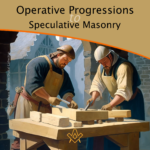 Operative Progressions to Speculative Masonry Both Operative and Speculative Masonry are an important part of the modern fraternity of Freemasonry, which combines elements of both traditions. Today, Freemasonry is a fraternity that is open to men of good character, who are interested in personal development and in making a positive contribution to their communities. |
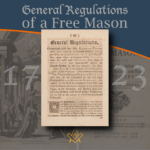 General Regulations of a Free Mason, 1723 General Regulations of a Free Mason as contained in Anderson's Constitutions of the Freemasons, published 1723. the Regulations are of great historical interest. Compiled by George Payne, the second Grand Master of the Premier Grand Lodge of England, they were printed in 1722/3, thus published just over five years after the formation of the Grand Lodge 1717. |
 The Genesis of the 1723 Book of Constitutions 2023, marks the three hundredth anniversary of the publication of the first printed Book of Constitutions of the Grand Lodge formally established in London two years previously. This is an anniversary whose significance extends beyond freemasonry. A paper by Andrew Prescott |
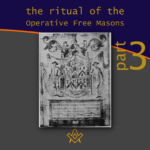 The Ritual of the Operative Free Masons - P3 Existing Operative Free Masons. The ritual I am about to refer, is that of "The Worshipful Society of Free Masons, Rough Masons, Wallers, Slaters, Paviors, Plaisterers, and Bricklayers." By Thomas Carr, M.D., P. M. Honorary Member of the Guild of Operative Free Masons |
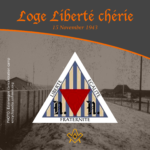 Liberté chérie was a Masonic Lodge founded in 1943 by Belgian Resistance fighters and other political prisoners at Esterwegen concentration camp. It was one of the few lodges of Freemasons founded within a Nazi concentration camp during the Second World War. |
 The Ritual of the Operative Free Masons - P2 If anyone doubts the fact that the formation of Speculative Free Masonry was due to and based upon Operative Free Masonry, it is quite easy to convince him of his error if he will only study the first Book of Constitutions. By Thomas Carr, M.D., P. M. Honorary Member of the Guild of Operative Free Masons |
 In 1881, Freemasonry rose from the ashes of a fire in the mining town of Kokomo, Summit County, Colorado. Corinthian Lodge No. 42, along with Kokomo, no longer exists but it holds the record of having been – at an elevation of 10,618 feet – the highest Masonic Lodge in the USA. |
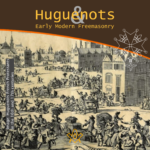 The Huguenots and Early Modern Freemasonry The Huguenots influence in the development of early modern Freemasonry at the time of the formation of the Grand Lodge in London around 1717 / 1723. |
 November is a month of reflection – perhaps due to the fact that we are getting close to the years' end – but also because Remembrance / Armistice Day (11 November) is a significant date in most countries' diaries. |
 Speculative Freemasonry, as practise by Grand Lodge of England, was officially born just over three hundred years ago, is today an international organisation, counting over six million members. It has been subjected to persecution, suppression, and abolition throughout its history. In its infancy, only a couple of decades after its official birth, it had already become a target. |
 The Ritual of the Operative Free Masons - P1 The original paper was written, first, to prove that Speculative Free Masonry was derived from Operative Free Masonry; second, to give some account of the Operative Free Masons, of their Ritual, and of their customs. By Thomas Carr, M.D., P. M. Honorary Member of the Guild of Operative Free Masons |
 American Fraternalism in the 19th and Early 20th Centuries The late 19th and early 20th centuries in the United States has been called the "Golden Age of Fraternalism." How did this come about and why was the idea of joining a fraternal organization so popular? We will explore this question and examine the regalia used by many fraternal organizations in this period. |
 Societas Draconistarum, meaning "Society of the Dragonists"– was a chivalric Order for selected nobility, founded in 1408 by Sigismund von Luxembourg, who through marriage became the King of Hungary (1387–1437) and later Holy Roman Emperor. The Order was fashioned after the military orders of the Crusades, requiring its initiates to defend the cross and fight the enemies of Christianity, in particular the Ottoman Empire. |
 The Perjured Free Mason Detected Was Samuel Prichard a perjured individual, or simply a misguided Freemason? Prichard's book "Free Masonry Dissected" published in 1730, is now used by many Masonic historians as a source of reference with regards to the introduction of the third degree into the Craft. But at the time it was published in 1730, it was not so well received by members of the Grand Lodge of England. |
 17th century and the Holy Royal Arch This article focuses on a period of transition between a point in time when we can safely and historically identify the first formation of what could be called as the ‘Royal Arch’ and the historical events that have preceded it. |
 Most Freemasons have heard the terms 'Operative' and 'Speculative' Masons, and this article helps to understand the difference: |
 Roberts' Constitutions of Freemasonry 1722 Published a year before Anderson's Constitutions, The Old Constitutions Belonging to the Ancient and Honourable SOCIETY OF Free and Accepted MASONS. Originally printed in London England; Sold by J. Roberts, in Warwick-Lane, MDCCXXII.(1722) |
 From 'Songs of religion and life', 1876 by John Stuart Blackie (1809-1895) |
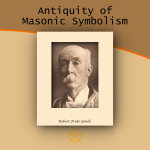 On the Antiquity of Masonic Symbolism Is the Symbolism of Masonry an inheritance derived from the old Masons who flourished before the era of the Grand Lodges (1717); or has it been borrowed from the Rosicrucians or others, after 1717? |
 Mason's Marks – from Egypt to Europe? Mason's marks have been a source of intrigue, not only to Freemasons but to historians and archaeologists. The use of simple pictograms have been employed for millennia by artisans to identify their work. But where did they originate and why? |
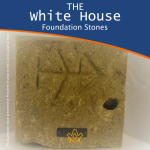 The White House Foundation Stones Further to the articles in our series on the history of the stone masons, we have a rather intriguing addition. During the 1950's renovation of the White House, President Truman retrieved more than 100 stone blocks with stonemasons marks. |
 What the Goose and Gridiron Tavern is in the ancient annals of London Freemasonry, The Green Dragon Tavern is to the memories of the Free-mason, of Boston and New England. |
 Auschwitz concentration camp: video photo article taken in 2013 |
 There are two things of importance happening this day - 27 January |
 Two approaches regarding the understanding of Freemasonry |
 Masonic Research in England c1930 An article which appeared in an American Masonic magazine, c1930 and which was reproduced in England, provoking a little controversy. |
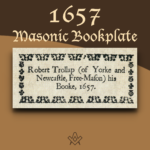 Masonic bookplates the ‘Brethren’s spiritual coats of arms and marks’ |
 The Unlawful Societies Act of 1799 Rebellious Freemasons and the 21st century |
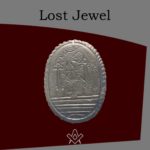 In 1912, Sarah Dowd of Dromore, Ireland, found a Masonic jewel dated 1517 - a date two hundred years before the establishment of Grand Lodge... |
 Freemasonry and Fascist Regime Interesting speech by the famous historian Prof. Aldo A. Mola, who links the fascist regime with the Masonic Associations. |
 Was famous Russian poet Alexander Pushkin a Freemason? And if so, was he a member of the lodge ‘for which all the lodges in Russia were destroyed’? |
 The Importance of Masonic Research Why is accurate - or authentic - Masonic research so important? The importance of making a daily advancement in Masonic knowledge is something that The Square is passionate about promoting. |
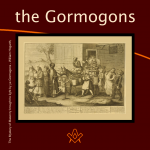 The Antient Noble Order of the Gormogons had a brief existence in the eighteenth century; they left few records or accomplishments, |
masonic knowledge
to be a better citizen of the world
share the square with two brothers

click image to open email app on mobile device


